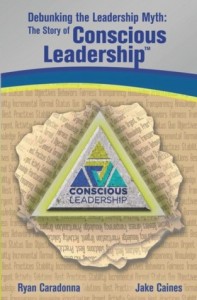Thomas E. Cronin and Michael A. Genovese. Leadership Matters: Unleashing the Power of Paradox. Boulder, CO: Paradigm Publishers, 2012.
 This book has got to be good; it has received thumbs up from several of the giants of leadership theory: Bennis, Burns, O’Toole, etc. Basically the message is that leaders are responsible for getting things done with the collaboration of others through the development and communication of vision, purpose and energy into an “enterprise.” The authors challenge common myths of …
This book has got to be good; it has received thumbs up from several of the giants of leadership theory: Bennis, Burns, O’Toole, etc. Basically the message is that leaders are responsible for getting things done with the collaboration of others through the development and communication of vision, purpose and energy into an “enterprise.” The authors challenge common myths of …

 When I saw the title of this book on the Internet, I was sure this was something important for me to read. I was not mistaken. Here is an extraordinary scholarly contribution to the development and explorations of frameworks that address the fragmentation of knowledge and research that has both served and detracted from the efficacy of higher …
When I saw the title of this book on the Internet, I was sure this was something important for me to read. I was not mistaken. Here is an extraordinary scholarly contribution to the development and explorations of frameworks that address the fragmentation of knowledge and research that has both served and detracted from the efficacy of higher … If you are in the leadership industry or just interested in the evolution of our practicing, developing and thinking about leadership, this will be an interesting book for you. It begins,
If you are in the leadership industry or just interested in the evolution of our practicing, developing and thinking about leadership, this will be an interesting book for you. It begins, Call me old or cantankerous or both if you really must, but there are very few books that I get excited about these days. Gone are the days when I scoured the internet looking for new books that I have to have on the day that they are published and read and devour their content in days if not hours. I no …
Call me old or cantankerous or both if you really must, but there are very few books that I get excited about these days. Gone are the days when I scoured the internet looking for new books that I have to have on the day that they are published and read and devour their content in days if not hours. I no …